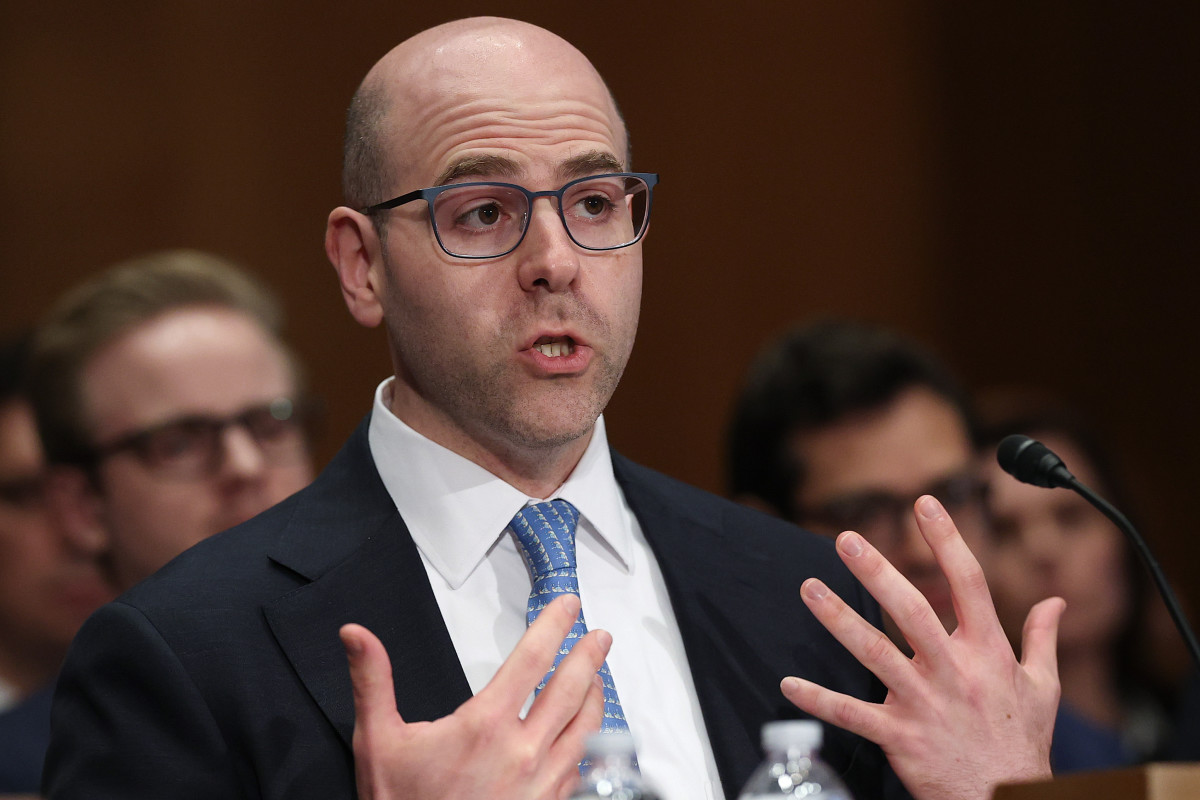[ad_1]
More is better. And the bigger the better.
The Federal Reserve’s newest member is not only pushing for much lower interest rates – and soon – but says inflation from tariffs should not be a barrier to doing so.
Fed Governor Stephen Miran, in his first monetary policy speech since taking on the temporary role Sept. 15, made clear his opinions and arguments for lowering the Federal Funds Rate are in line with President Trump’s demands for exactly that.
- Miran was the only member of the Federal Open Market Committee to break with the panel’s decision to lower rates by a quarter percentage point Sept. 17.
- He dissented in favor of a jumbo cut of a larger half point cut and also forecast a much more aggressive approach to future rate cuts.
Miran’s a Fed outlier and proud of it
In an unprecedented arrangement, Miran is on unpaid leave as chair of the White House Council of Economic Advisers while serving a temporary term at the Fed that ends Jan. 31.
More Economic Analysis:
Miran would be able to stay at the Fed indefinitely, however, if Trump doesn’t nominate a successor.
His appointment rattled Fed watchers, economists and traders both here and abroad who spoke of the need for the U.S. central bank to remain independent of political control.
Trump has made clear he intends to appoint Fed governors who back his version of monetary policy.
Federal Reserve’s monetary policy balances inflation, jobs
The Federal Reserve’s dual mandate from Congress requires price stability and full employment.
- Lower interest rates lead to less unemployment but higher prices.
- Higher interest rates lead to lower inflation but higher unemployment.
Related: Controversial Fed official drops bold 3-word message
The Fed had held off cutting the Federal Funds Rate this year to monitor the impact tariff inflation through the nation’s supply chain and to determine if those price increases would be a one-time bump or linger into consumers’ wallets.
The funds rate is now 4.0% to 4.25%.
Miran calls for aggressive interest-rate cuts
In his remarks Sept. 22 before the Economic Club of New York, Miran heavily referenced data and studies from the Council of Economic Advisors.
Miran said in his prepared remarks that the neutral rate of interest — where the policy rate neither stimulates nor weighs on the economy — has been pushed lower this year by tariffs, immigration restrictions and tax policy.
“Based on this analysis, I believe the appropriate fed funds rate is in the mid-2 percent area, almost two percentage points lower than current policy,” Miran said.
Trump has been demanding a three-percentage-point cut for months.
Lower interest rates will prevent damaging the economy, Miran said.
“The upshot is that monetary policy is well into restrictive territory,” Miran said. “Leaving short-term interest rates roughly two percentage points too tight risks unnecessary layoffs and higher unemployment.”
By contrast, the median projection of the Fed’s 19 officials has them lowering rates by another half percentage point.
“It’s not a panic. A panicky move would be something like 75 basis points or more,” Miran said in a question-and-answer session following his speech. “I’m not panicked, I just see that the risks grow the longer you remain significantly above neutral.”
Miran’s expands his view on the U.S. economy
“With respect to tariffs, relatively small changes in some goods prices have led to what I view as unreasonable levels of concern,” Miran said, adding that the Trump Administration’s tariff policy “will lead to substantial swings in net national saving.”
Miran, a Harvard-educated macroeconomist, also took a solid swing himself at the U.S. regulatory environment:
- America’s regulatory patchwork has become a material impediment to growth.
- Regulation hinders productivity growth, restricts capacity, and ultimately helps fuel inflation.
- Regulators may have good reason for doing so…but we must be clear-eyed about the economic consequences.
Miran also nodded to the fallback position of many that economics is an unpredictable science.
“To be clear, I don’t want to imply more precision than I think is possible in economics. Assumptions and approximations abound,” he said.
“Nevertheless, I must stake out a position, and this is my best ballpark estimation.”
Other Fed officials cool towards sticky inflation
Meanwhile, Sept. 22 was a busy day for Fed watchers:
- Fed Bank of St. Louis President Alberto Musalem noted he sees limited room for cuts amid elevated inflation.
- His Cleveland counterpart Beth Hammack said officials should be cautious to avoid overheating the economy.
- And Atlanta Fed President Raphael Bostic told The Wall Street Journal that inflation concerns would make him hesitant for now to declare support for cutting rates again in October, even though economic risks have shifted in recent months toward greater worries about employment.
According to Bloomberg, Morgan Stanley’s Michael Wilson said investor focus is likely to shift to the Fed’s tolerance of sticky inflation in 2026, and away from worries about a weaker labor market.
“Should the administration’s intention to ‘run it hot’ play out next year while the Fed cuts rates, revenue and earnings growth could come in much stronger than expected,” he wrote.
Related: J.P. Morgan sends strong recession message on Fed interest-rate cut
[ad_2]

